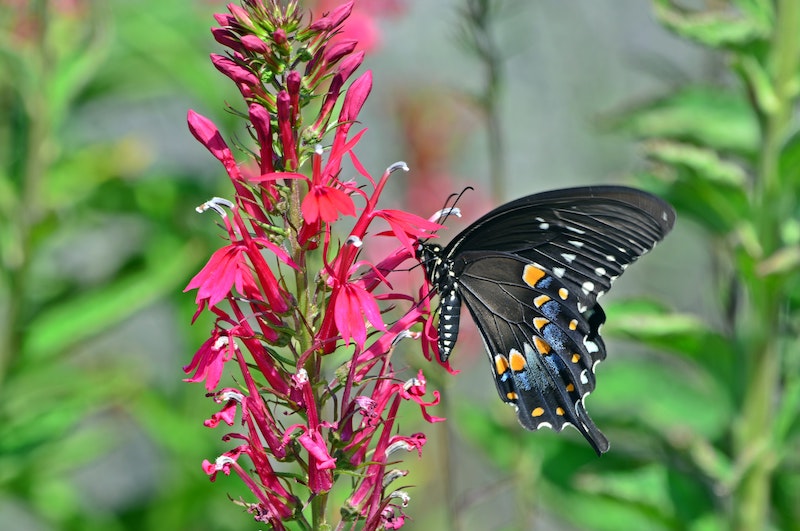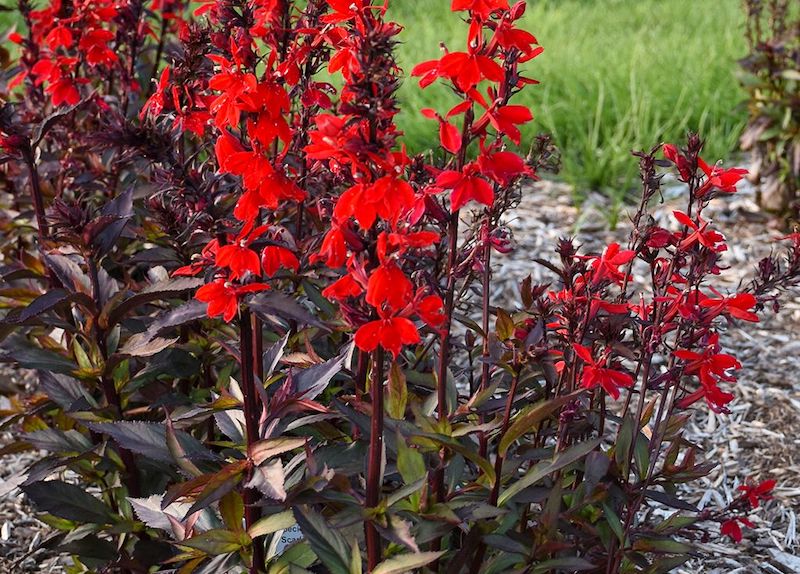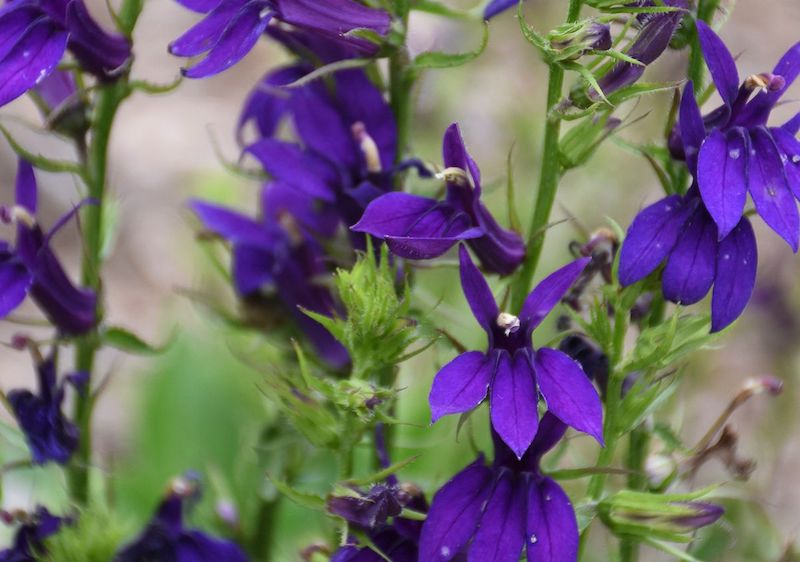Growing Cardinal Flower
Cardinal flower (Lobelia cardinalis), is a striking red wildflower native to North, South and Central America. Interestingly, it gets its name from the red robes worn by Roman Catholic cardinals. Cardinal flowers self-seed, growing outward in clumps. They reach a mature size of 3-6 feet tall by 1-2 feet wide. Blooms appear from July into early fall on 8-inch-tall flower stalks. They are a favorite among hummingbirds and other beneficial pollinators. Cardinal flowers thrive in moist areas with slightly acidic to neutral soil pH. This plant is considered to be toxic to humans and pets if consumed.

Planting Cardinal Flower
Key to the healthy growth of a cardinal flower is planting it in a moist area that receives full to partial sun (4-8 hours of sunlight daily). The cardinal flower is a great wildflower addition to native and pollinator gardens. Plant it in nutrient-rich soil; if necessary, amend the soil with compost prior to planting. Space plants 12 inches apart. Cardinal flower plants propagate by seed and can spread quickly. Topdress soil with a one-inch thick layer of mulch to help retain soil moisture. Water thoroughly upon planting the flower, and continue keeping the soil moist through the growing season.

Watering Cardinal Flower
Keep the soil moist at all times for this wetland-loving plant. You may find that you need to water multiple times a week, depending on how much sun your cardinal flower receives. Cardinal flowers are able to survive in swampy areas–don’t be afraid to water this plant! Cardinal flowers also need plenty of humidity and prefer to live in a humid environment. Ensure that you water deeply when it has not rained. Cardinal flowers are able to spread more easily with consistently moist soil. This plant will tolerate living in poorly draining regions of your garden.
Fertilizing Cardinal Flower
Use plenty of compost and organic matter upon planting. This is especially true if you have poor soil quality in your area. Compost will also help to retain soil moisture. If you fertilize your cardinal flowers, do so in early spring before new growth appears. One annual fertilization should be enough, as they aren’t heavy feeders. In fact, cardinal flowers really don’t require any supplemental fertilizer to grow happily.

Pruning Cardinal Flower
Wait to prune your cardinal flower until the plant turns brown, making sure to leave the basal growth (bottom layer of foliage). You can tidy up the look of these plants at any point during the growing season. As necessary, remove spent flower spikes and any dead or damaged foliage. The cardinal flower self-seeds, which means that removing too many spent flowers at the end of the season could impact next year’s spread. Only remove flower stalks in the spring, not fall, to avoid this. Divide the clumps of cardinal flowers every two to three years to give the plants more space to grow into. Pinch back the new growth if you desire a more bushy and compact plant.
Caring For Cardinal Flower in Pots
Cardinal flowers are usually planted directly in the garden, not pots or containers. If you’d like to pot your cardinal flower, use a large container. All-purpose potting soil should be adequate for the growing medium. Potted cardinal flower will need frequent watering. Cardinal flowers usually overwinter outdoors, so the container or pot should be moved to a sheltered location but not indoors. This is because the plant needs a three-month period of cold weather as a part of its life cycle.
Winter Care for Cardinal Flower
Cardinal flowers are often able to survive harsh winters. These plants are hardy down to zone 3. When you prune these plants, make sure to leave a layer of foliage at the bottom to protect the root ball through winter. A one-inch layer of mulch on top of the plants will help retain warmth over winter. You will want to make sure the root crown is covered too. During early spring, you can remove the mulch from the top of the plant.
 |
Author Chris Link - Published 3-17-2023 |
